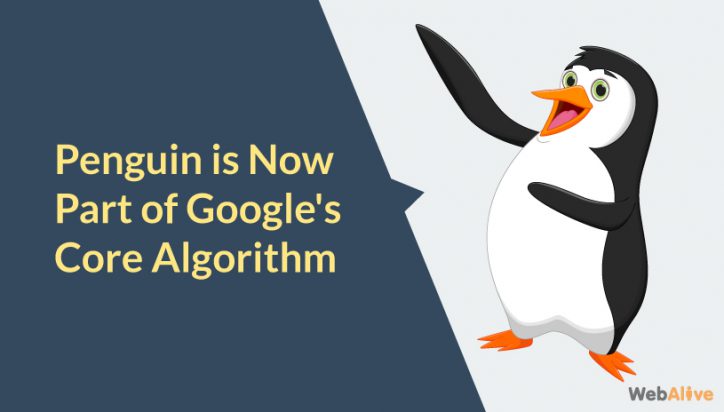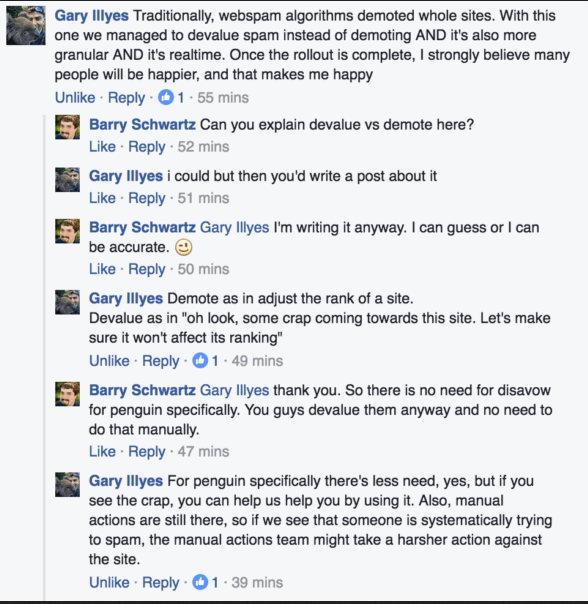
What You Need To Know About Penguin 4.0
If you try to keep up to date with search engine optimisation then you’ve probably heard of Penguin, a series of updates to Google algorithm, the first of which was released back in 2012.
Essentially, these releases have enabled Google to change the way it values and ranks different websites, with the ultimate goal being to make sure Google users find the websites that fit their search queries.
What do these changes mean?
With the latest update, namely Penguin 4.0, released in late September, it is a good idea for website owners to understand how things are going to change and what you can do to ensure that the update works in your favour.
Let’s have a look at this update’s main features and the effect that these will have.
1. Real-time changes
Previous Penguin updates were rolled out as one single event, meaning the websites that took a hit as a result of the changes could move down the ranks very quickly and it would tend to remain penalised for longer periods of time, even if changes were made to correct these issues.
Most of the time, websites would have to wait until the next Penguin update before it was recrawled and reindexed according to the same (or similar) standards.
The “real-time feature” of Penguin 4.0 has streamlined this process, as Penguin is now capable of assessing pages instantly, making the algorithm much more efficient and essentially negating the need for future updates or versions of Penguin.
It has essentially become a part of Google’s core algorithm, rather than being released once a year, affecting rankings over a small period of time and then not being applied again until the next update.
Effects will be imminent as Penguin will operate as an ongoing, regular process of indexing pages and websites. A Google spokesman said:
“With this change, Penguin’s data is refreshed in real time, so changes will be visible much faster, typically taking effect shortly after we recrawl and reindex a page.”
2. Pages and websites viewed as separate entities
In the past, websites using sneaky and spammy techniques not approved of by Google would be hit with a site-wide penalty. If one page had a bunch of low-quality links and was not well-put together, it would drag the rest of the website down with it.
However, since the roll-out of Penguin 4.0, a more page-specific, ‘granular’ approach – as Google has described it – has been adopted for website filtering.
Penguin 4.0 allows for the concept of specific pages and sections of websites to be looked at separately and stand in their own right, rather than being part of a bigger whole.
As a result, penalised pages would be much more easy to spot and single out, given they would not be performing at the level of the other pages on the website.
This is particularly pertinent when talking about spammy links. Rather than tarnishing the reputation of an entire website, which can be a difficult hole to climb out of, low-quality links will tend to only affect the page itself.
Google acknowledged this by saying:
“Penguin is now more granular. Penguin now devalues spam by adjusting ranking based on spam signals, rather than affecting ranking of the whole site.”
According to a conversation between Gary Illyes and Barry Schawartz – it seems Google Penguin no longer penalises the site or specific pages but rather devalues the spammy links and thus the rankings are adjusted accordingly.
Recommendations for moving forward with Google Penguin 4.0
Get backlinks from relevant and trusted websites
It would not be an exaggeration to say that links control the web, and link building certainly remains one of the most important search engine ranking factors. Penguin 4.0 provides a more effective and capable means of detecting the quality of links and rewarding websites according.
So getting backlinks only from reliable and relevant websites and ensuring your links are working for you rather than against you becomes all the more important.
Do not over optimise anchor texts
From an SEO perspective, optimising anchor texts is very important, but pushing the limits of anchor text optimisation and overdoing it can be counterproductive.
After the update, repetitive optimisation of a set of anchor text or building too many links with that same target anchor text will no longer provide or diminish the value to the website.
Put in another way, there is little point in low-quality link building and anchor text optimisation, as these will no longer contribute to a website’s ranking.
Do not build too many do-follow links
For the long-term and sustainable success of a website, both do-follow and no-follow links are essential and helpful websites to gain organic traffic.
Generally, a good balance between these two types of links should be maintained.
If all links to a website are do-follow, Google will consider this to be manipulative and label the website as spammy, which will obviously have a negative impact on its ranking.
Recommendation: Understand the role of rel=nofollow and maintain a healthy acceptable Dofollow-Nofollow link ratio.
Never participate in Link Schemes
A link scheme is when a website adds links or is linked to irrelevant websites for perceived ranking or monetary benefits, rather than being useful to the users.
Your website is actually judged by who you link to and who links to you. Every link you create on your website is essentially a signal that says who you are and what your site is about.
As mentioned earlier, Penguin 4.0 has no time for link scheme participating websites.
Therefore, it is particularly important to avoid linking to websites that use spam or are in a “bad neighbourhood” as this will adversely affect your website’s ranking.
Review and refine your website’s backlink profile
Another way you can harness a positive result from the update is by reviewing your website’s backlink profile. If you find that there are negative signals such as links to and from unnatural, irrelevant websites, it’s time to cut your ties with them! It might require that you do a bit of research to ascertain how high quality these links actually are.
A refined backlink profile is always a positive credential for a website.
Are these changes for the good?
There is little doubt that these changes will be beneficial to both Google users and website managers looking for an edge. The changes seem to reaffirm what Google has been saying for years and has ultimately been trying to move towards; a search engine environment where there are no shortcuts and website managers leave a minimal SEO footprint.
In fact, these changes seem to encourage website managers to do the things the right way, rather than taking the easy path. By devaluing specific pages rather than an entire website, SEOs have more information from which to gauge what they’re doing right and what they’re doing wrong.
In much the same way, near-instant updates to website rank when changes are made means that manager can track exactly what is working and are encouraged to keep doing that.
From the users’ perspective, they are more likely to get the results they’re looking for because things are being monitored in real-time and the search engine is working more effectively.
Is Penguin fully live?
While Penguin 4.0 isn’t fully live yet, it is being rolled out over the next few weeks and is expected to have a very positive influence on the SEO landscape.
You read a lot. We like that
Want to take your online business to the next level? Get the tips and insights that matter.


